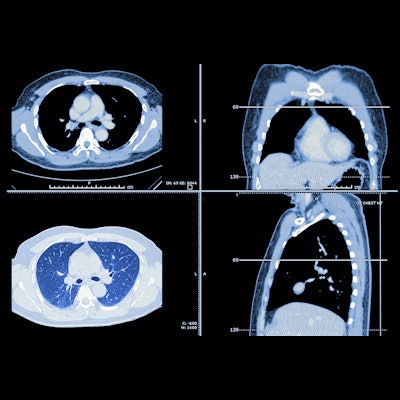
A centralized lung cancer screening approach -- that is, a dedicated program to which patients are referred by primary care providers -- is more effective than sending people to a general radiology department, according to a study published September 15 in Chest.
In fact, patients referred to a centralized CT lung cancer screening program have a compliance rate of 70%, compared with only 41% for patients who undergo a screening process led by their primary care provider, wrote a team led by first author Dr. Harrison Smith of the Medical University of South Carolina in Charleston.
"[We found that] those screened using a centralized approach are more likely to meet eligibility criteria for lung cancer screening and more likely to return for annual screening than those using a decentralized approach," the group noted.
The rate of CT lung cancer screening in eligible individuals has been increasing, but there's still room for improvement, Smith and colleagues wrote. Barriers include a lack of access to screening programs and adequate time to discuss the pros and cons of screening with a primary care provider. Even if patients undergo an initial CT screening exam, many don't follow up with annual screening.
The authors sought to assess the benefits of a centralized lung cancer screening program -- which verifies patients' eligibility for screening, facilitates a shared decision-making process with patients, orders the CT exam, communicates results to the referring physician, and schedules any needed follow-up -- compared with a decentralized screening approach, which is managed solely by a primary care provider who refers patients to a general radiology department for screening.
The new study included 1,117 patients who underwent low-dose CT lung cancer screening between May 2015 and February 2020; screening was conducted using both centralized and decentralized approaches. The researchers defined annual adherence as baseline CT and a 15-month follow-up exam for those who had baseline LungRADS scores of 1 or 2 (negative or benign).
Smith and colleagues found that overall adherence to lung cancer screening among the total patient cohort was 56%. Centralized screening improved the compliance rate to 70%; the rate for the decentralized approach was 41%, and patients screened in this way were 73% less likely to follow through.
| Lung cancer screening compliance by type of approach | ||
| Metric | Decentralized lung cancer screening | Centralized lung cancer screening |
| Adherence rates | 41% | 70% |
| Percentage of patients screened out of total study cohort | 45.5% | 54.5% |
| Percentage of patients compliant (determined by follow-up after baseline low-dose CT) | ||
| LungRADS 1 | 68.4% | 31.3% |
| LungRADS 2 | 74.7% | 46.7% |
The findings highlight the benefits of centralized screening, Smith and colleagues wrote.
"A centralized program has the needed time to conduct proper shared decision-making, review results, track patients, and the ability and focus to repeatedly contact patients for annual follow-up that a decentralized approach does not," they concluded. "While this does require resources including the cost of tracking tools and dedicated nurse navigation, it does the most to ensure proper patient selection, follow-up, and adherence that results in high-quality lung cancer screening."



















